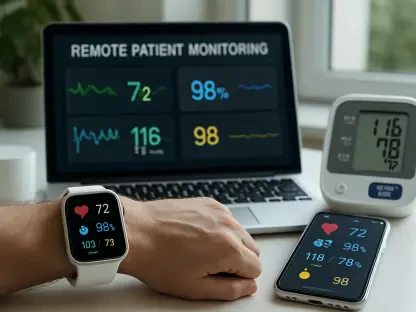The digital realm has significantly shaped mental health care in recent years, offering a myriad of apps designed to provide varying levels of support. With therapy services remaining inaccessible for many due to high costs and social stigmas, especially in countries like India, technology has emerged as a crucial bridge to better mental well-being. In 2025, the smartphone in one’s hand can be a powerful ally, yet the sheer number of available mental health apps necessitates a discerning approach to choosing the right one. While some apps offer genuine therapeutic tools that resonate well with users, others serve more as distractions, filled with short-lived affirmations and intrusive advertisements. Therefore, understanding the nuances between these digital offerings becomes essential for anyone looking to supplement their mental health journey with the right app. This article explores the effectiveness and limitations of mental health apps, emphasizing the importance of mindful selection.
The Role of Mental Health Apps in Today’s Society
Modern society increasingly recognizes mental health as an essential component of overall well-being, resulting in a growing demand for accessible support solutions. Mental health apps offer an innovative answer, equipped to provide resources personalized to the individual’s needs. These tools often integrate cognitive behavioral therapy (CBT) techniques, guided meditations, and journaling features, offering users an opportunity for self-reflection and growth at their own pace. The app Wysa, for example, melds effective CBT principles into a chatbot interface, available anytime the user needs a supportive nudge or a mental health check-in. Such resources become especially valuable to those hesitant to engage in traditional therapy due to financial or cultural constraints. Despite their convenience, the efficacy of these apps hinges on their ability to create genuine therapeutic interactions, rather than superficial effects.
However, it should be noted that not all apps deliver equally meaningful engagement. Some, like Calm or Headspace, offer high-quality mindfulness exercises but may encounter cultural mismatches, especially in regions where their content may feel foreign. Furthermore, while they promise mental clarity, their financial demands can alienate potential users seeking affordable options. Mindfulness apps like Shyft tailor to a professional audience by offering structured sessions devoid of overt spirituality but still require consideration for the diverse backgrounds of their users. To truly serve their intended purpose, these apps must resonate authentically with a broad audience, effectively bridging the gap between digital support and personal understanding.
Evaluating the Efficacy of Popular Mental Health Apps
Determining the effectiveness of mental health apps involves understanding both their strengths and weaknesses within varied contexts. For illustration, InnerHour effectively combines self-care plans with optional access to therapy, empowering users to manage their mental health proactively. This personalized plan helps users track their mood and progress, ultimately fostering a sense of ownership over their mental well-being journey. Meanwhile, Lissun distinguishes itself by enabling seamless connections with verified professionals, making professional help more accessible. Nonetheless, despite its functionality, room for improvement still exists for Lissun to maintain competitiveness in a fast-evolving digital landscape.
Conversely, certain apps stumble to appeal to diverse user demographics. Happify’s cheerful design does aim to uplift, yet its Western-centric content has been criticized for alienating users from different cultural backgrounds. Another example, Seraniti, faces challenges related to its dated interface and unreliable session management, which detract from the overall user experience. When selecting a mental health app, users should prioritize platforms that provide a balanced and culturally inclusive environment, ensuring that app content resonates with their personal context. This approach enhances overall engagement, making the selected app a more meaningful tool for mental health support.
Making Informed Choices for Mental Health App Selection
In the modern digital era, consumers are inundated with options, making choosing the right mental health app no straightforward task. Selecting a suitable app involves not only assessing its therapeutic tools but also weighing its accessibility and cultural relevance. Users are encouraged to look beyond the surface-level allure of an app’s sleek design and instead delve into reviews, testing features, and trial sessions offered by the app. Apps that offer personalization, versatility, and an intuitive user experience typically stand out as more effective in fostering a genuine connection between user and application.
Importantly, users are advised to complement these apps with offline support. While the digital landscape provides valuable self-assessment and coping tools, these should not replace face-to-face interactions with professionals if available. Facilitating an ecosystem of both digital and in-person care enhances the holistic approach needed for effective mental health management. The key lies in informed decisions, recognizing apps as tools to supplement—not supplant—real-world support. As mental health apps continue to evolve in 2025, users must develop an informed and critical eye, opting for those that elevate their journey toward well-being through meaningful engagement.
Looking Beyond 2025: Navigating Evolving Digital Landscapes
In modern society, mental health is increasingly seen as crucial to overall well-being, leading to a rising demand for accessible support solutions. Mental health apps are an innovative response, designed to offer resources tailored to individual needs. These apps often include cognitive behavioral therapy (CBT) techniques, guided meditations, and journaling, allowing users to reflect and grow at their own pace. For example, Wysa incorporates effective CBT principles into a chatbot available whenever users need support or a mental health check-in, making it especially valuable for those reluctant to pursue traditional therapy due to financial or cultural barriers. While convenient, the success of these apps depends on creating genuine therapeutic engagement instead of superficial interactions.
However, not all apps offer meaningful engagement. For instance, while Calm and Headspace provide quality mindfulness exercises, they may not resonate culturally in some regions and can be unaffordable. Mindfulness apps like Shyft target professionals with structured, non-spiritual sessions but must consider their users’ diverse backgrounds to truly bridge digital support with personal understanding.









